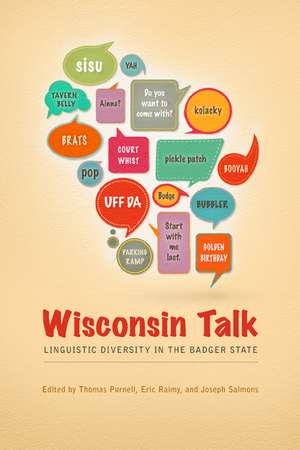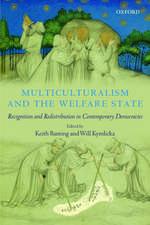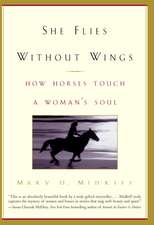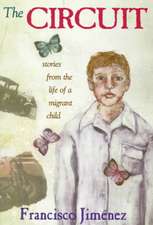Wisconsin Talk: Linguistic Diversity in the Badger State: Languages and Folklore of Upper Midwest
Editat de Thomas Purnell, Eric Raimy, Joseph Salmonsen Limba Engleză Paperback – 16 sep 2013
Wisconsin is one of the most linguistically rich places in North America. It has the greatest diversity of American Indian languages east of the Mississippi, including Ojibwe and Menominee from the Algonquian language family, Ho-Chunk from the Siouan family, and Oneida from the Iroquoian family. French place names dot the state's map. German, Norwegian, and Polish—the languages of immigrants in the nineteenth and early twentieth centuries—are still spoken by tens of thousands of people, and the influx of new immigrants speaking Spanish, Hmong, and Somali continues to enrich the state's cultural landscape. These languages and others (Walloon, Cornish, Finnish, Czech, and more) have shaped the kinds of English spoken around the state. Within Wisconsin's borders are found three different major dialects of American English, and despite the influences of mass media and popular culture, they are not merging—they are dramatically diverging.
An engaging survey for both general readers and language scholars, Wisconsin Talk brings together perspectives from linguistics, history, cultural studies, and geography to illuminate why language matters in our everyday lives. The authors highlight such topics as:
• words distinctive to the state
• how recent and earlier immigrants have negotiated cultural and linguistic challenges
• the diversity of bilingual speakers that enriches our communities
• how maps can convey the stories of language
• the relation of Wisconsin's Indian languages to language loss worldwide.
An engaging survey for both general readers and language scholars, Wisconsin Talk brings together perspectives from linguistics, history, cultural studies, and geography to illuminate why language matters in our everyday lives. The authors highlight such topics as:
• words distinctive to the state
• how recent and earlier immigrants have negotiated cultural and linguistic challenges
• the diversity of bilingual speakers that enriches our communities
• how maps can convey the stories of language
• the relation of Wisconsin's Indian languages to language loss worldwide.
Preț: 214.41 lei
Nou
Puncte Express: 322
Preț estimativ în valută:
41.03€ • 42.95$ • 33.95£
41.03€ • 42.95$ • 33.95£
Carte tipărită la comandă
Livrare economică 07-21 aprilie
Preluare comenzi: 021 569.72.76
Specificații
ISBN-13: 9780299293345
ISBN-10: 0299293343
Pagini: 196
Ilustrații: 43 b-w figs., 4 tables
Dimensiuni: 152 x 229 x 15 mm
Greutate: 0.27 kg
Ediția:1
Editura: University of Wisconsin Press
Colecția University of Wisconsin Press
Seria Languages and Folklore of Upper Midwest
ISBN-10: 0299293343
Pagini: 196
Ilustrații: 43 b-w figs., 4 tables
Dimensiuni: 152 x 229 x 15 mm
Greutate: 0.27 kg
Ediția:1
Editura: University of Wisconsin Press
Colecția University of Wisconsin Press
Seria Languages and Folklore of Upper Midwest
Recenzii
"An outstanding book that will set the standards for books of its kind. At once accessible—indeed, enjoyable—and both original and fully informed."—Michael Adams, editor of American Speech
“The authors’ passion for Wisconsin linguistic richness is evident throughout, and readers are likely to come away with a better appreciation for the importance—and fun—of language preservation.”—Isthmus
“Very highly recommended for Wisconsin school, community and academic library Language Studies reference collections and supplemental reading lists.”— Midwest Book Review
Notă biografică
Thomas Purnell is associate professor of English at the University of Wisconsin–Madison, and his research examines the interface between phonetics and phonology with a focus on regional pronunciation. Eric Raimy is associate professor of English language and linguistics at the University of Wisconsin–Madison and is coeditor of Contemporary Views on Architecture and Representations in Phonology and Handbook of the Syllable. Joseph Salmons is the Lester W. J. "Smoky" Seifert Professor of Germanic Linguistics at the University of Wisconsin–Madison. He is author of A History of German: What the Past Reveals about Today's Language and executive editor of Diachronica: International Journal for Historical Linguistics.
Cuprins
Foreword
Peyton Smith
Prologue: Why Language Matters for Wisconsin
Joseph Salmons
Introduction: Thinking about Language and Wisconsin English
Thomas Purnell, Eric Raimy, and Joseph Salmons
1 The Native Languages of Wisconsin
Karen Washinawatok and Monica Macaulay
2 Older Immigrant Languages
Felecia Lucht
3 Immigrant Languages and Education: Wisconsin's German Schools
Antje Petty
4 The Non-Wisconsin Sound of Southwest Wisconsin
Kristin Speth
5 Words Used in Wisconsin
Luanne von Schneidemesser
6 Standard English: What Is It? And What Is It Good For?
Eric Raimy
7 Ethnicity and Language
Thomas Purnell
8 Hmong in Wisconsin
Susan MeredithBurt
9 Spanish in Wisconsin: Advantages of Maintenance and Prospects for Sustained Vitality
Catherine Stafford
10 Mapping Wisconsin's Linguistic Landscapes
Mark Livengood
Conclusion and Outlook
Joseph Salmons
References
Contributors
IndexDescriere
Wisconsin is one of the most linguistically rich places in North America. It has the greatest diversity of American Indian languages east of the Mississippi, including Ojibwe and Menominee from the Algonquian language family, Ho-Chunk from the Siouan family, and Oneida from the Iroquoian family. French place names dot the state's map. German, Norwegian, and Polish—the languages of immigrants in the nineteenth and early twentieth centuries—are still spoken by tens of thousands of people, and the influx of new immigrants speaking Spanish, Hmong, and Somali continues to enrich the state's cultural landscape. These languages and others (Walloon, Cornish, Finnish, Czech, and more) have shaped the kinds of English spoken around the state. Within Wisconsin's borders are found three different major dialects of American English, and despite the influences of mass media and popular culture, they are not merging—they are dramatically diverging.
An engaging survey for both general readers and language scholars, Wisconsin Talk brings together perspectives from linguistics, history, cultural studies, and geography to illuminate why language matters in our everyday lives. The authors highlight such topics as:
• words distinctive to the state
• how recent and earlier immigrants have negotiated cultural and linguistic challenges
• the diversity of bilingual speakers that enriches our communities
• how maps can convey the stories of language
• the relation of Wisconsin's Indian languages to language loss worldwide.
An engaging survey for both general readers and language scholars, Wisconsin Talk brings together perspectives from linguistics, history, cultural studies, and geography to illuminate why language matters in our everyday lives. The authors highlight such topics as:
• words distinctive to the state
• how recent and earlier immigrants have negotiated cultural and linguistic challenges
• the diversity of bilingual speakers that enriches our communities
• how maps can convey the stories of language
• the relation of Wisconsin's Indian languages to language loss worldwide.




















